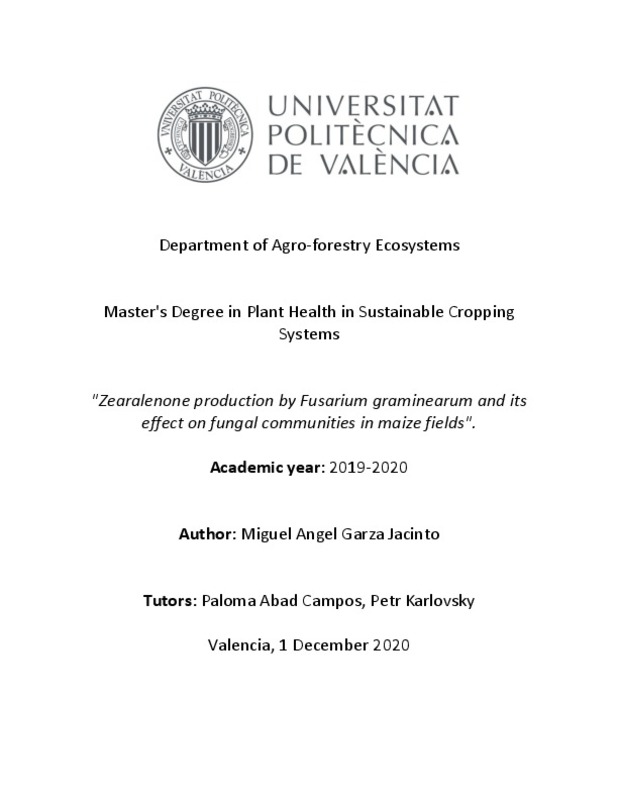JavaScript is disabled for your browser. Some features of this site may not work without it.
Buscar en RiuNet
Listar
Mi cuenta
Estadísticas
Ayuda RiuNet
Admin. UPV
Zearalenone production by Fusarium graminearum and its effect on fungal communities in maize fields
Mostrar el registro completo del ítem
Garza Jacinto, MA. (2020). Zearalenone production by Fusarium graminearum and its effect on fungal communities in maize fields. Universitat Politècnica de València. http://hdl.handle.net/10251/159783
Por favor, use este identificador para citar o enlazar este ítem: http://hdl.handle.net/10251/159783
Ficheros en el ítem
Metadatos del ítem
| Título: | Zearalenone production by Fusarium graminearum and its effect on fungal communities in maize fields | |||
| Otro titulo: |
|
|||
| Autor: | Garza Jacinto, Miguel Angel | |||
| Director(es): | Karlovsky, Petr | |||
| Entidad UPV: |
|
|||
| Fecha acto/lectura: |
|
|||
| Resumen: |
[ES] En cereales, Fusarium graminearum Schwabe (teleomorfo Gibberella zeae Petch) es el agente causal más común del tizón de la espiga por Fusarium en muchas partes del mundo y también está asociado con la pudrición del ...[+]
[EN] In cereals, Fusarium graminearum Schwabe (teleomorph Gibberella zeae Petch) is the most common causal agent of Fusarium head blight in many parts of the world and is also associated with corn stalk and ear rot. ...[+]
|
|||
| Palabras clave: |
|
|||
| Derechos de uso: | Reconocimiento (by) | |||
| Editorial: |
|
|||
| Titulación: |
|
|||
| Tipo: |
|







